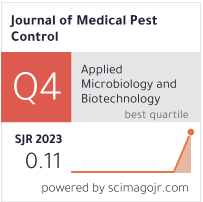Analysis of the monitoring results of the poliomyelitis cell sensitivity experiment from 2012 to 2022 in Shaanxi Province
Abstract
Objective:
To analyze the monitoring results of cell sensitivity experiments used for poliomyelitis surveillance in Shaanxi Province from 2012 to 2022, and to evaluate the quality and reliability of the cell-based detection system over time.
Methods:
Data from poliovirus cell sensitivity experiments conducted in Shaanxi Province during 2012–2022 were collected and analyzed. The performance of cell cultures, including sensitivity, contamination rates, and ability to detect poliovirus, was assessed according to national and WHO standards.
Results:
Over the 11-year period, the sensitivity of the cell cultures consistently met or exceeded the required criteria, ensuring reliable detection of polioviruses. Minor fluctuations in sensitivity and contamination rates were observed but remained within acceptable limits. Improvements in laboratory practices and quality control measures contributed to maintaining high cell sensitivity.
Conclusion:
The cell sensitivity monitoring system for poliovirus in Shaanxi Province demonstrated stable and satisfactory performance from 2012 to 2022. Continuous monitoring and adherence to quality standards are essential to support effective poliovirus surveillance and eradication efforts.
Full text:
PDFReferences
Li L., Du Y., Hu W., Dong Y., Si Y., Zhang S.



